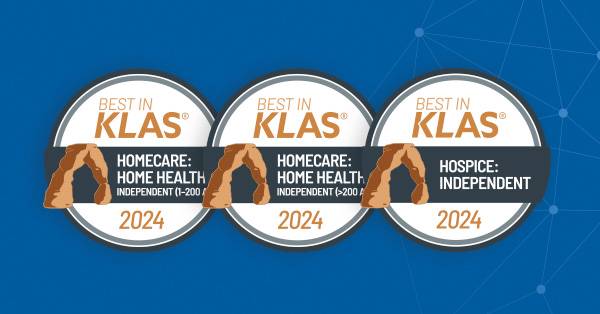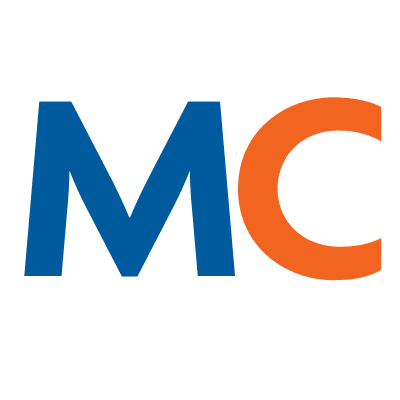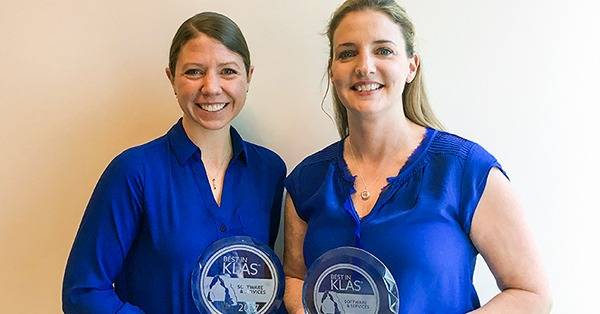- Solutions
- Solutions
- Home Health
- Hospice
- Life Plan Community
- Palliative Care
- Private Duty
- Senior Living
- Skilled Nursing
- Skilled Nursing
- Skilled Nursing Software
- Advanced Insights
- Customer relationship management
- Data and analytics
- Financial & operations management
- Marketing
- Nutrition management
- Referral management
- Regulatory compliance
- Retail management
- Resident engagement
- Revenue cycle management
- Skilled nursing interoperability
- Partners
- Blogs
- Resources
- About
- User Conference

4 strategies to increase growth and optimize technology in home health and hospice
With the numerous headwinds organizations are facing in home health and hospice today, it’s critical for them to adopt business efficiencies, strategic performance improvement and technology innovation to achieve success and growth.
In this blog, we explore four strategies to grow your business by optimizing technology.
1. MatrixCare provides an easier way for clinicians to document, spend more time with their patients, and have better documentation accuracy.
Documentation is more than just health data, it’s the patient’s story. And when this narrative is told well, care plans are developed accurately and can be easily transitioned from provider to provider — or clinician to clinician.
A complete patient story is paramount to quality care and MatrixCare is one of the first to offer fully-integrated speech recognition to the home health and hospice market — allowing clinicians to document patient notes verbally, which helps saves time, increases accuracy, and ultimately accelerates reimbursement. This improved clinical efficiency also leads to clinician satisfaction, a goal for many home health, hospice and palliative care agencies combating high turnover.
“New speech-to-text functionality is a game-changer for our clinical staff.”
–Janell Solomon, Director of Compliance, Sangre de Cristo Community Care
Benefits of speech-to-text technology helps you:
- Improve clinical workflow efficiency: when documentation happens at the point of care, fewer corrections need to be made later in the process.
- Increase clinician satisfaction: quick and easy documentation means less work being done from home and better management of multiple caseloads.
- Maximize reimbursements: patient encounters captured accurately leads to billing efficiency downstream.
- Maintain HIPAA compliance: risk is avoided when organizations are given control over data with secure technology.
2. MatrixCare’s interoperability and partner integration focus closes the interoperability gap.
Interoperability is not only the ability to share data between systems, but also the ability to share data between all care stakeholders: medical professionals, patients, family members, and other non-medical care team members. When we achieve true interoperability, patient outcomes improve, healthcare costs are reduced, and the patient experience improves — the original intent of the HITECH Act.
The next decade will be about enabling the right information to be made available to the right individuals, when and where care is needed.
In a recent research study, we surveyed post-acute providers to better understand the current state of interoperability. Results show a demand for connected technology but a stagnant industry:
- Only 39% of PAC providers say their organizations have advanced or matured their interoperability capabilities in the past 12 months, leaving 61% of the industry stagnant.
- 99% of referring entities said they would likely send more referrals to PAC providers who were more capable of receiving orders electronically.
- 96% of referring entities said they would likely send more referrals to PAC providers with strong patient engagement capabilities.
- PACs are still using outdated mechanisms, such as phone calls and emails, most of the time to exchange data and information with their medical and non-medical care team members.
Other responses show how interoperability is more important ever:
- 65% of referring entities surveyed reported greater than 25% of their revenue is now tied to value-based care arrangements.
- 51% expect that percentage to grow over the next 12-18 months.
Meeting the rising demands of referring partners can improve patient care and empower business growth, helping post-acute providers stay competitive in 2023 and beyond.
“MatrixCare makes us successful. They help drive us to deliver the quality care we know our patients deserve and to maintain our employee satisfaction. We had a successful and zero deficiency survey all around: productive staff, satisfied families, well-cared-for patients — and a great EHR system that makes it all come together.”
–Janell Solomon, Director of Compliance, Sangre de Cristo Community Care
3. MatrixCare tools help with staff satisfaction and reducing staff burnout.
As the shortage increases, the role of leadership across the care continuum will need to manage burnout and employee satisfaction. How can your organization offer better work-life balance?
At Sangre de Cristo, staff satisfaction is on the rise because their system’s accessibility, efficiency, and convenience make their lives easier and require less personal time for documentation. Aides and clinicians can simply click through their activities list in the patient’s care plan and code patient charts more accurately. This not only benefits staff efficiency, but also mitigates audits and other risks related to coding quality — like delayed reimbursement due to incomplete or inaccurate information.
4. MatrixCare has actionable data and timely feedback.
The lifeblood of any business is the flow of important information. This is especially true for home health, hospice and palliative care, where knowing how to analyze that information can help your organization make better business decisions.
MatrixCare’s analytics options allow you to select the one that best fits your needs:
MyAnalytics Viewer
A base set of analytical reports that capture the most commonly monitored metrics for home health or hospice.
- Web app features embedded content from Power BI.
- Informative dashboards are updated daily and accessible via desktop or mobile.
- Visualizations can be quickly filtered to see specific data details.
MyAnalytics
A Power BI app workspace optimized for agencies that want the flexibility to build upon existing published MyAnalytics Viewer content.
- Graphs and reports using out-of-the-box visualizations and themes.
- Custom dashboards and interactive reports can be shared within your agency.
- Content can be published and consumed via mobile devices.
- Alerts that users manage and subscribe to.
- Centralized user management and security.
MyData
Optimized for agencies that want the flexibility to create their own data relationships, data models, calculations, and measures for reporting.
- Secure access to data tables that power MyAnalytics Viewer reports.
- Compatible with any analytics-reporting tool.
- Help documentation available for source system tables, field descriptions, and table relationships.
- A corporate view of analytics can be created using a custom reporting solution that combines information from MyData and other source systems.
With data-driven organizations typically able to outpace their competition, data access can truly become a differentiator.
Request a demo today to experience all the ways MatrixCare can help you optimize technology to grow your business.
See what MatrixCare can do for you
Rob Stoltz
Rob Stoltz, Sr Dir, Business Development Home and Hospice. A long time veteran in the home-based healthcare IT industry with deep experience in EMRs, care transitions, patient engagement, predictive analytics and interoperability. Most recently, Rob has been focused on technology partnerships leveraging interoperability to benefit all stakeholders involved with patient care while enhancing provider efficiency through effective workflows.
Related Posts


See MatrixCare in action
Start by having a call with one of our experts to see our platform in action.
MatrixCare offers industry-leading software solutions. Thousands of facility-based and home-based care organizations trust us to help them improve efficiency and provide exceptional care.
© 2025 MatrixCare is a registered trademark of MatrixCare. All rights reserved.





